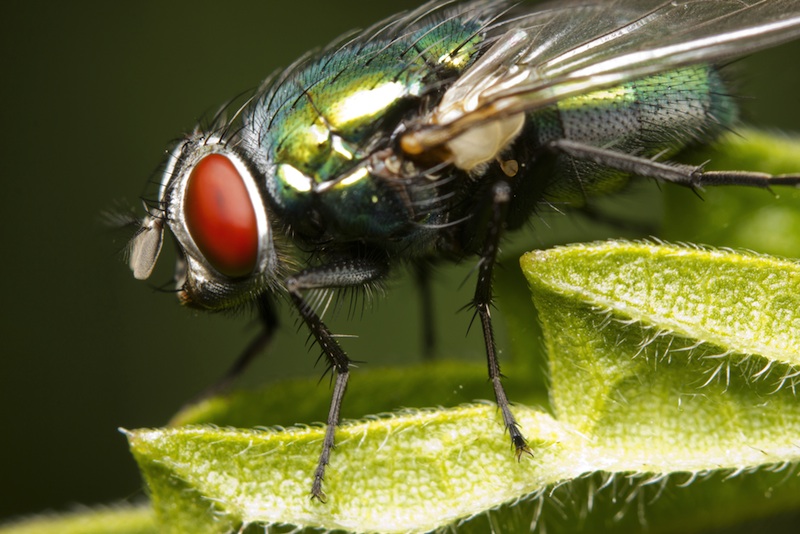
A new video captures the lightning-fast fluttering of blowfly wings in intricate detail.
The 3D, real-time video of insect flight could be used to design tiny, flying robots, or to create mini sensors for many applications, said study co-author Graham K. Taylor, a biomechanist at the University of Oxford in England.
Tiny, flying machines
Flies are anomalies in the world of insect flight: While most insects, such as dragonflies, have two sets of wings, through evolution blowflies have lost one pair of wings and converted them into a tiny gyroscope that measures the blowflies' rotation.
"That's part of why they're so good at maneuvering — they've got this additional sense that other insects don't have," Taylor told Live Science.
Understanding how blowflies maneuver is incredibly tricky. Like other flying bugs, they accomplish the large-scale beating of their wings by deforming their thorax (midsection), which then moves the wings up and down.
But the miniscule muscles that steer and make fine-grade adjustments contract at a rapid-fire pace that had made visualization nearly impossible.
Get the world’s most fascinating discoveries delivered straight to your inbox.
Some of the blowflies' steering muscles are as thin as a human hair, Taylor said. "And you're looking at them moving up and down 50 times in the time it takes you to blink your eye," he told Live Science.
In a blink
To capture such quick movement, researchers glued live blowflies to the equivalent of a Popsicle stick, and then bombarded them with extremely powerful X-rays from a particle accelerator. The X-rays allowed the researchers to capture the speedy, tiny motion of the steering muscles. [See Video of the Blowfly 3D Flight In Action]
The team found that the tiny steering muscles at the hinge of the wings deformed a small amount, about 3 percent. But that small deformation was crucial, because it allowed the muscles to asymmetrically absorb energy from the larger wing beats, thus acting as brakes to slow and steer the flies.
"It's like using the engine to brake when you're going down the hill," Taylor said.
The new findings could be used as inspiration to design tiny flying drones with more precise steering. Instead of relying on rigid materials and traditional engineering structures such as gears, such flying machines could use flexible materials, similar to an insect's exoskeleton, said study co-author Simon Walker, a biomechanist who is also at the University of Oxford.
The same principles could be used for other sensors that require precise, rapid 3D movements on a small scale, Walker told Live Science.
The blowfly motion analysis was published today (March 25) in the journal PLOS Biology.
Follow Tia Ghose on Twitter and Google+. Follow Live Science @livescience, Facebook & Google+. Original article on Live Science.

Tia is the editor-in-chief (premium) and was formerly managing editor and senior writer for Live Science. Her work has appeared in Scientific American, Wired.com, Science News and other outlets. She holds a master's degree in bioengineering from the University of Washington, a graduate certificate in science writing from UC Santa Cruz and a bachelor's degree in mechanical engineering from the University of Texas at Austin. Tia was part of a team at the Milwaukee Journal Sentinel that published the Empty Cradles series on preterm births, which won multiple awards, including the 2012 Casey Medal for Meritorious Journalism.


